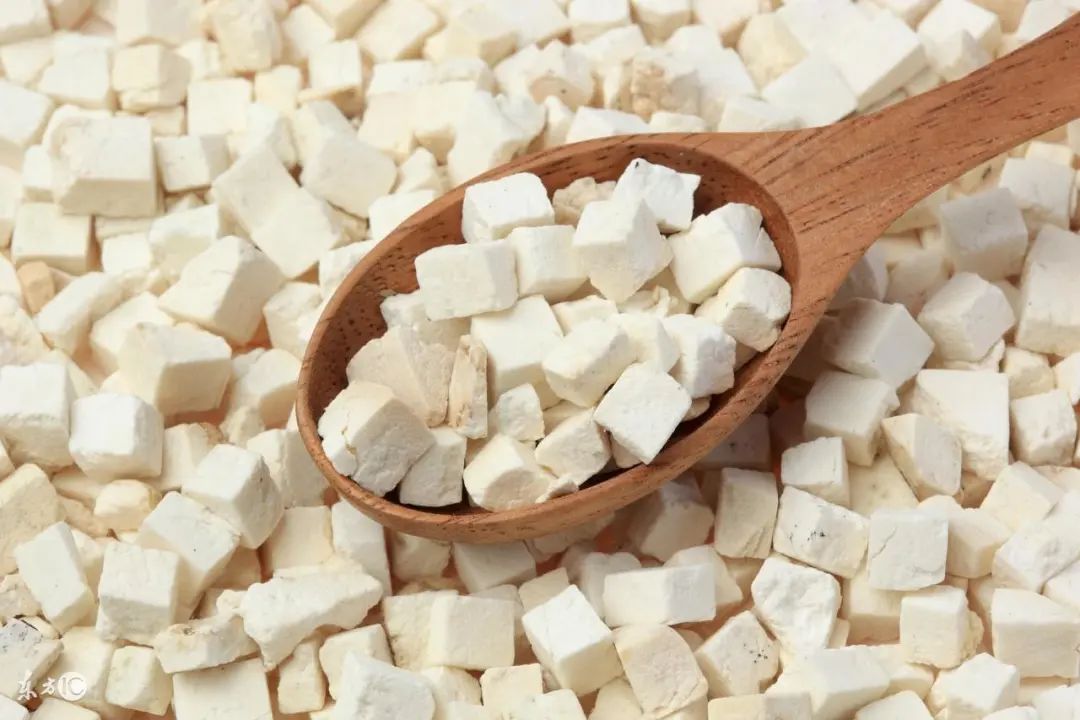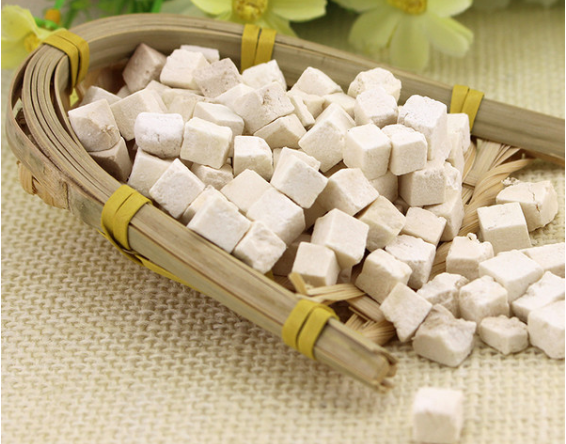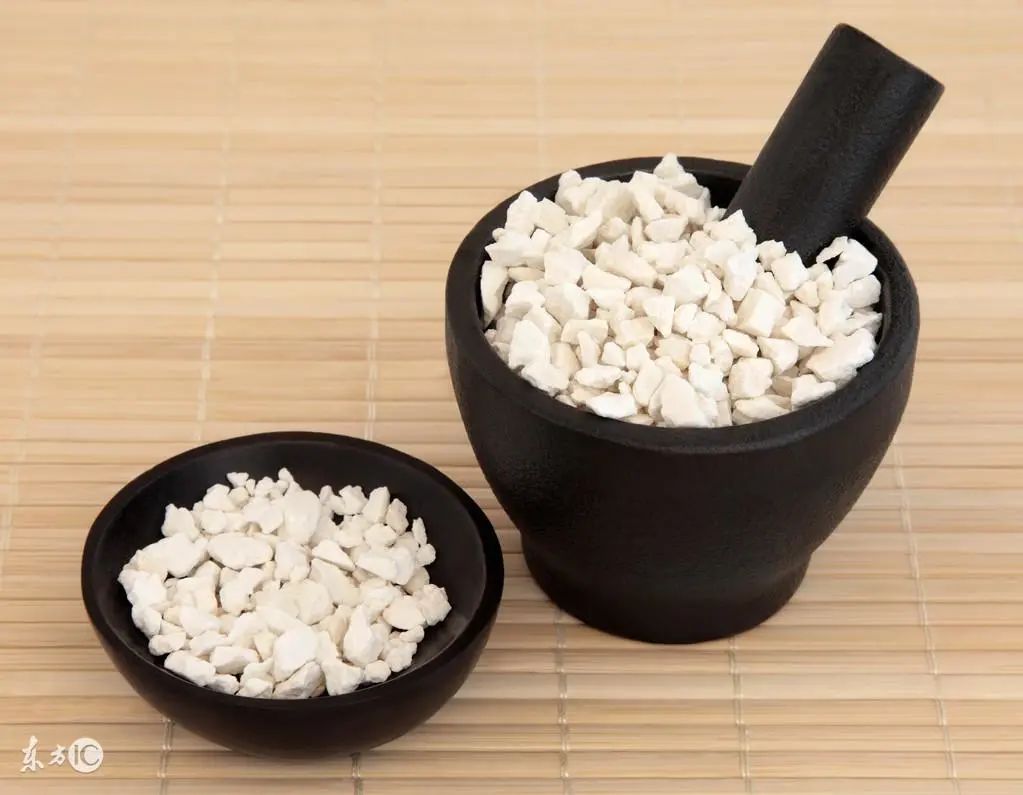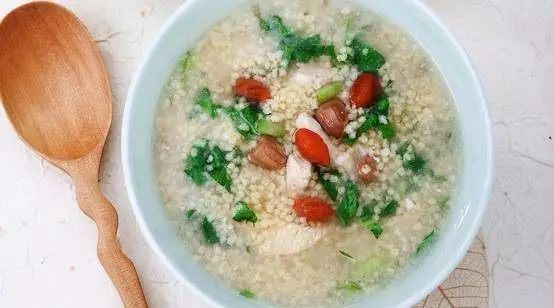Poria (Fu Ling) is a type of traditional Chinese medicine and can also be used in daily dietary practices. Regular consumption of Poria is highly beneficial for the body. So, what are the benefits of frequently eating Poria?
Poria is also known as Fu Ling, Fu Tu, Fu Ling, Fu Ling, Song Yu, Jiang Chen Fu Tai, Yun Ling, Fu Tu, Song Shu, Song Mu Shu, and Song Ling. The medicinal part is the sclerotium of the fungus Poria cocos from the family Polyporaceae. Poria has many functions, such as promoting urination and draining dampness. Its properties are mild, benefiting water metabolism without harming the body’s vital energy, making it a key herb for promoting urination and draining dampness. Symptoms of difficulty urinating or water retention can be treated with Poria, regardless of whether they are due to cold dampness, damp-heat, or spleen deficiency with damp accumulation. It also has the effects of strengthening the spleen and calming the spirit.

The Efficacy and Benefits of Poria
1. Medicinal Value
Properties: Sweet, bland, neutral. Channels: Heart, spleen, kidney.
Functions: Promotes urination and drains dampness, strengthens the spleen, calms the spirit.
Indications: Edema, reduced urination, phlegm-dampness causing dizziness, spleen deficiency with poor appetite, loose stools, anxiety, and insomnia. It is currently used in the treatment of uterine fibroids.
1. Used for difficulty urinating and edema.
Poria promotes urination and drains dampness, and its properties are mild, benefiting water metabolism without harming the body’s vital energy. It can be used for symptoms of difficulty urinating or water retention, regardless of whether they are due to cold dampness, damp-heat, or spleen deficiency with damp accumulation. For those with cold dampness, it can be combined with Gui Zhi (Cinnamon Twig) and Bai Zhu (White Atractylodes); for damp-heat, it can be combined with Zhu Ling (Polyporus) and Ze Xie (Alisma); for spleen qi deficiency, it can be combined with Dang Shen (Codonopsis) and Huang Qi (Astragalus); for deficiency-cold, it can also be combined with Fu Zi (Aconite) and Bai Zhu.
2. Used for spleen deficiency diarrhea and leukorrhea.
Poria can strengthen the spleen and drain dampness, and can also be used as an auxiliary herb to tonify the lung and spleen, treating qi deficiency.
3. Used for phlegm-damp cough, phlegm-damp obstructing the channels, shoulder and back pain.
Poria can promote urination and drain dampness, and has a spleen-strengthening effect. It is effective for symptoms where the spleen is unable to transform and transport water and dampness, leading to phlegm accumulation. It can be used with Ban Xia (Pinellia) and Chen Pi (Dried Tangerine Peel), or combined with Gui Zhi and Bai Zhu. For phlegm-damp obstructing the channels and shoulder pain, it can be combined with Ban Xia and Zhi Ke (Bitter Orange).
4. Used for palpitations and insomnia.
Poria nourishes the heart and calms the spirit, thus it can be used for anxiety, palpitations, and insomnia, often combined with Ren Shen (Ginseng), Yuan Zhi (Polygala), and Suan Zao Ren (Sour Jujube Seed).
5. Anti-cancer and anti-tumor effects.
Clinically, it is often used in the treatment of esophageal cancer, gastric cancer, liver cancer, nasopharyngeal cancer, tongue cancer, breast cancer, bladder cancer, lung cancer, and ulcerative melanoma, particularly in cases of spleen deficiency with excessive dampness, phlegm accumulation, and damp-heat obstruction.
6. Enhancing immune function.
Poria polysaccharides, hydroxyethyl Poria polysaccharide-3, and hydroxyethyl Poria polysaccharide-4, when injected into the abdominal cavity, can significantly enhance the cytotoxic effects of peritoneal exudate cells (PEC) in mice, thereby increasing the cytotoxicity of macrophages.
Hydroxy-methyl Poria polysaccharides can significantly enhance the number of spleen antibody-secreting cells (PFC) and specific antigen-binding cells (SRFC).
They can increase the number of acid non-specific esterase (ANAE) positive lymphocytes.
They can enhance the cytotoxicity of T lymphocytes: Poria polysaccharides can enhance the cytotoxicity of T lymphocytes, thereby enhancing cellular immune responses and activating the body’s immune surveillance system against tumors, which is closely related to its anti-tumor activity.

2. Health Benefits
Poria contains Poria polysaccharides, glucose, proteins, amino acids, organic acids, fats, lecithin, adenine, choline, ergosterol, various enzymes, and potassium salts.
It can enhance the body’s immune function, and Poria polysaccharides have significant anti-tumor effects; it has diuretic effects, increasing the excretion of potassium, sodium, and chloride electrolytes in urine; it has sedative effects and protects the liver, inhibits the occurrence of ulcers, lowers blood sugar, and has anti-radiation effects. Poria is also used in Poria cakes, Poria pastries, and Poria wine. In some countries, Poria is used as a common medicinal and tonic ingredient for the navy. In warmer regions and places, Poria can be an important dietary therapy ingredient, and regular consumption can strengthen the spleen, eliminate dampness, aid digestion, and enhance physical constitution.
1. Appetite soup: 15g of Poria, 12g of Huai Shan (Chinese Yam), 30g each of barley malt, fresh and dried duck gizzards, boiled into a soup for drinking. Used for children’s indigestion and lack of appetite.
2. Poria and Job’s Tears porridge: 25g each of Poria and Job’s Tears, 5g of Chen Pi, appropriate amount of glutinous rice, cooked into porridge. Used for children’s spleen deficiency diarrhea and difficulty urinating.
3. Poria and Job’s Tears cake: 30g each of Poria, Job’s Tears, and white flour, appropriate amount of sugar, ground into fine powder, mixed and pressed into cakes, steamed until cooked. Suitable for children, beneficial for the spleen and stomach.
4. Poria, Chen Pi, and ginger juice tea: 25g of Poria, 5g of Chen Pi, boiled in water, add 10 drops of fresh ginger juice when drinking. It has the effect of strengthening the spleen and stomach, and can treat pregnancy-related vomiting.
5. Poria and chestnut porridge: 15g of Poria, 25g of chestnuts, 10 dates, 100g of glutinous rice. Boil the chestnuts, dates, and glutinous rice in water; grind Poria into powder, and add it gradually when the rice is half-cooked, stirring until well mixed, and cook until the chestnuts are fully cooked. Sugar can be added for flavor.
This formula uses Poria to tonify the spleen and drain dampness, chestnuts to tonify the spleen and stop diarrhea, and dates to benefit the spleen and stomach. It is used for spleen and stomach weakness, reduced appetite, and loose stools.
6. Poria and Mai Dong porridge: 15g each of Poria and Mai Dong (Ophiopogon), 100g of millet. Cook the millet in water; decoct the two herbs to extract a concentrated juice, and add it when the millet is half-cooked, cooking until fully done.
This formula uses Poria to calm the heart and spirit, Mai Dong to nourish yin and clear the heart, and millet to eliminate heat. It is used for heart yin deficiency, heat in the chest, palpitations, insomnia, and dry mouth.
7. Poria cake: 200g of Poria, 10g of Ren Shen, 800g of flour. Grind the two herbs into fine powder separately, add a little salt, mix with flour and water to knead into a dough, make several cakes weighing about 100g each, and cook them. Eat one each time.
This formula uses Poria and Ren Shen to tonify qi and benefit the spleen, with Ren Shen delaying aging. It is used for tonifying deficiency and anti-aging.
8. Poria wine: 60g of Poria, 20 dates, 12g of Dang Gui (Angelica), 12g of Goji Berries, 1500ml of white liquor. Cut the herbs into pieces, place them in a jar, pour in the white liquor, seal and soak for 15 days, shaking every three days, and drink 1-2 times daily, 10-15ml each time. It is suitable for those with qi and blood deficiency, and symptoms of weakness in the waist and legs, fatigue, premature ejaculation, impotence, premature graying of hair, palpitations, insomnia, and reduced appetite.
9. Poria: Soak in water, wash, slightly steam, and then cut into pieces or thick slices and dry.
10. Red Poria: Take Poria pieces, spray with clean water, slightly moisten, and sprinkle with fine red mercury powder evenly, turning repeatedly until the surface is coated with the powder, then dry (for every 100 jin of Poria, use 30 taels of red mercury powder).
11. Poria paste: 500g of white Poria, 1000g of white honey. First, grind the white Poria into fine powder, wash away the floating material with water, collect the sediment, filter out the water, wash and dry three times, then grind into fine powder again, mix with white honey, heat and boil until it forms beads when dripped in water, then bottle for storage. Take 12-15g twice daily with boiled water. Regular use of this product is beneficial for elderly edema, obesity, and cancer prevention.

Side Effects of Poria! How to Consume Poria
Poria is a well-known traditional Chinese medicinal plant with high medicinal value, efficacy, and effects. However, as a type of traditional medicine, Poria also has its related contraindications and side effects. So, what are the side effects of Poria? How should Poria be consumed correctly? Let me introduce it to you.
Side Effects of Poria
Everything has its good side, but it also hides a bad side, so people should understand the related matters to minimize harm. Does Poria have side effects?
We know that Poria has diuretic effects, and if taken in excess, it can lead to frequent urination, harming the body’s foundation and depleting vital energy. Additionally, patients with kidney deficiency may experience worsened symptoms after consumption, even leading to issues like premature ejaculation, so dosage and special populations should be considered.
Patients who are often prone to dry mouth and those with qi deficiency should avoid consumption, as it may harm the body.
When taking Poria, avoid substances like rice vinegar and strong tea, and pay attention to the dosage; otherwise, it may not only affect the efficacy but also cause allergic reactions such as abdominal pain, skin redness, and bronchial asthma attacks.
Methods of Consuming Poria
Recipe for Poria cake
Ingredients: 50g of Poria, 450g of flour.
Preparation:
1. Dry the Poria and grind it into powder, mixing it with flour.
2. Mix the Poria and flour, add yeast, and knead with water to form a dough for fermentation. Once fermented, shape it into a cake about 5cm square.
3. Steam the Poria cake over high heat until cooked.
Consumption: Once daily, for breakfast.
Effects: Strengthens the spleen, drains dampness, calms the spirit. Suitable for patients with hypertension and qi deficiency with damp obstruction.

Lotus Leaf and Poria Porridge
Ingredients: 1 lotus leaf (fresh or dried), 50g of Poria, 100g of glutinous rice or millet, appropriate amount of white sugar.
Preparation:
1. Boil the lotus leaf to extract the juice, discarding the residue, then add the Poria and washed glutinous rice or millet to the lotus leaf juice.
2. Cook into porridge, adding white sugar for flavor before serving.
This porridge clears heat and relieves summer heat, calms the spirit, and stops diarrhea, providing auxiliary treatment for cardiovascular diseases and neurasthenia.
In summary, through the above introduction, everyone should now understand the side effects of Poria and the methods of consumption. For any tonic or medicinal substance, it is essential to know the related contraindications and precautions. I hope this introduction is helpful to everyone.
If you find this useful, remember to  follow us!Editor shares good articles with friends
follow us!Editor shares good articles with friends
1. The most comprehensive! A list of 55 useful and inexpensive common medicines that must be in the family first aid kit! Quickly save it!
2. Medicines that hospitals don’t want to prescribe and pharmacies don’t want to sell, 12 types of “immediate effect” Chinese patent medicines, cheap and effective!
3. For those with nodules in the body, eating these 3 types of fruits regularly may help the nodules gradually dissipate.
4. What are the benefits of drinking mulberry water long-term, and can it be consumed regularly?
Like is a form of encouragement Share to spread joy
After reading, please click “Looking”

